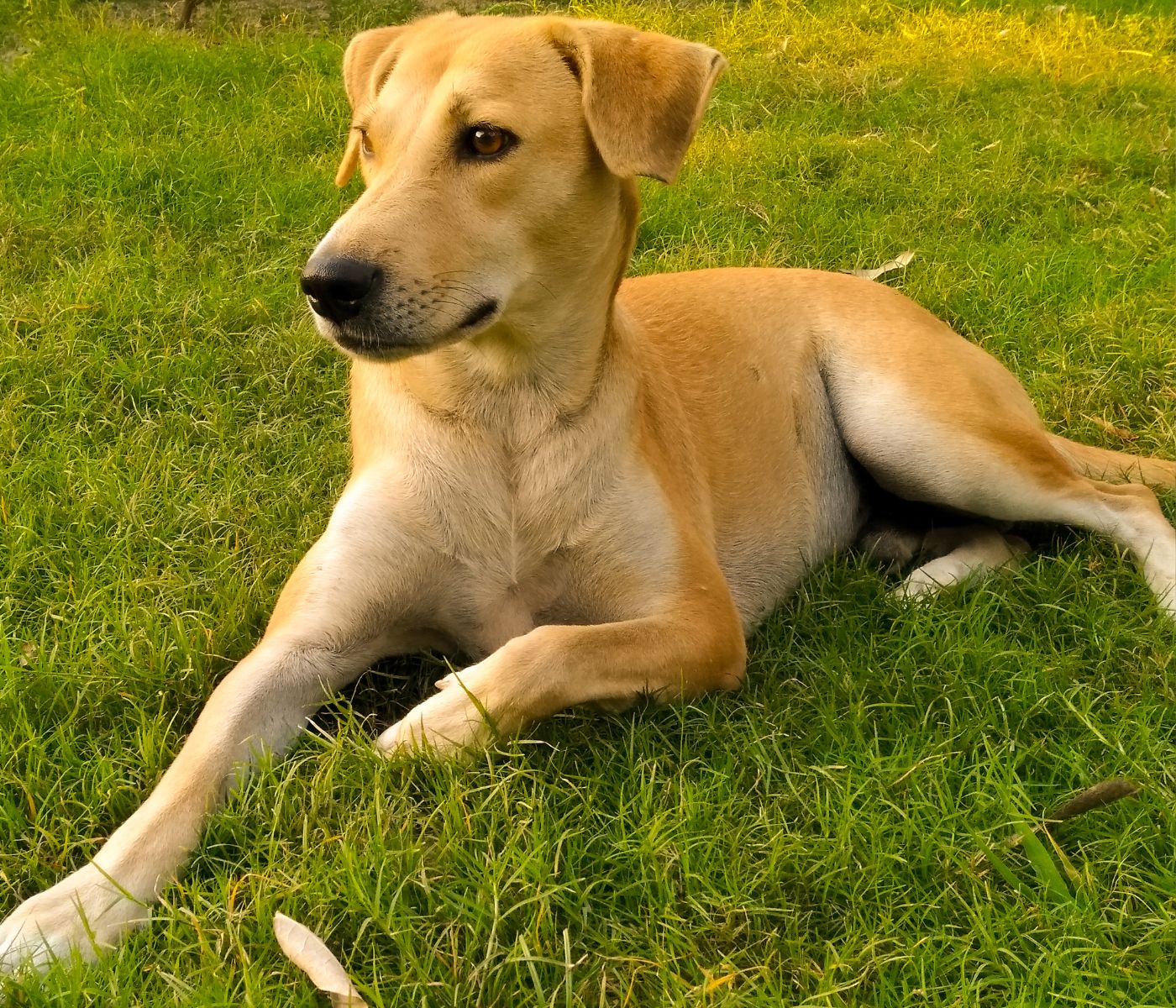Can you see your dog’s ribs? Well, the answer is yes, and no. Dogs have strong muscles so they can move freely without problems with their bones or joints. However, some health issues can affect dogs’ ribs and make them visible in some cases.
If you’re wondering if your dog’s ribs are visible, look at them. If they are covered with a layer of fat and muscle, then it’s unlikely that you’ll be able to see them. If there is no fat covering the bones, then there is the possibility that you will see the ribs.
You can also feel your dog’s ribs by running your hand down the side of their bodies. If you can feel them quickly, then it’s likely that they are visible as well.
What if your Dog is just a Skinny Pooch?
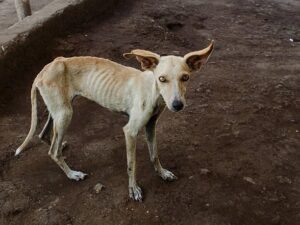
If your dog is skinny, then you may be able to see its ribs. However, this isn’t usually a sign of an unhealthy dog. It just means that they don’t have much fat on them and are more active than some other dogs.
If your dog is a skinny puppy with no health issues, it may be in good shape. Skinny dogs can have average weights and body fat percentages, even if they’re not as active as others.
The average weight for a dog is between 30 to 55 pounds (13–25 kg). Some breeds are heavier than others; for example, American Staffordshire terriers typically weigh around 35 pounds (16 kg), with males being larger than females. The adult male golden doodle weighs about 50 pounds (23 kg).
The American Kennel Club has created a breed standard for “the ideal pet,” which states that “all dogs should have sufficient muscle tone.”
This means that all dogs should have enough lean muscle mass without being overfat or obese—a condition called hyperlipidemia, where excess body fat can lead to cardiovascular disease or diabetes mellitus Type II.
Should You be Able to See Your Dog’s Ribs?
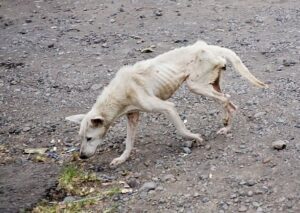
You should be able to see your dog’s ribs without touching him. This means you need to feed them the right food and supplements. If you can’t feel a dog’s rib after touching him, it could mean he is overweight.
If you can feel a dog’s ribs, but they are not protruding very much, then he is at a healthy weight. If you cannot see your dog’s ribs, he is healthy. You should also be able to feel his backbone.
If you cannot, then he is overweight. If you can feel the backbone but not see it, your dog is at a healthy weight.
If you have an overweight dog, he may be suffering from osteoarthritis. This is a condition where the cartilage between joints wears away over time, making it harder for your pet to move around. It can also cause pain in his joints and back.
Ask your veterinarian if you are unsure how much your dog should weigh. A dog’s weight should be proportional to his height. Many breeds of dogs have a specific ideal weight range. For example, a large Labrador Retriever may weigh around 100 to 120 pounds, while a tiny Chihuahua will only weigh 2-3 pounds.
Health Problems:
If your dog is losing weight and his ribs are visible, it could be a sign of a health problem. Losing too much weight can cause heart problems and other problems with the body. If you see his ribs showing through his skin, then it’s likely that he has lost more than usual.
This can also indicate an underweight dog who needs more food than usual or who has been eating too fast and not digesting correctly (which will result in less-than-optimal nutrition).
Contact your veterinarian if your dog’s weight loss is sudden and you are concerned about his health. A complete physical examination will help determine if there is a medical cause for the weight loss.
If you find that your dog’s ribcage is easily visible when he exhales or stands up straight, then there might be something wrong with him—he may need to see his vet!
How to Help Your Dog Lose Weight?
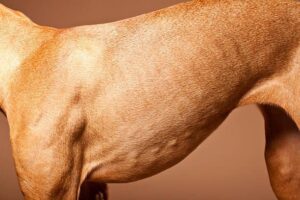
You can do a few things to help your dog lose weight. First, if you see that he’s getting too heavy, ensure his diet is balanced and healthy. If he likes it high in fat or sugar (like peanut butter), try switching them for ones with fewer calories.
Most importantly, remember to exercise! A 30-minute walk twice per day will help keep him from packing on the pounds while adding some much-needed fun to his life.
If you can, try to make exercise fun by playing fetch or going on walks where he can sniff around and explore.
It’s also a good idea to get him some toys that help him burn off energy while they’re both at home—a ball or bone will do the trick!
If your dog is gaining weight, it’s time to act. Many things can cause your pet to put on pounds, so ensure you’re addressing them all when trying to get him back in shape. If he needs to lose more than 10% of his body weight, talk with your vet about putting him on a weight loss plan.
It would help if you made dietary changes for your dog. This may mean cutting back on certain types of food they like by removing those items from their diet altogether—or simply feeding them less than average portions until they lose weight.
This will help them lose weight naturally over time without needing surgery or other invasive procedures done by doctors at Veterinary Medical Center Miami (VMCM).
If you need to figure out precisely what types of food to cut back on, consult your vet for advice. They can tell you what would be best for your dog’s health and well-being and how much they should eat each day.
How to Check Your Dog’s Ribs?

When checking your dog’s ribs, you should also ensure that there isn’t any extra skin and fur on them. If your dog has a lot of extra skin and fur, brush it before checking the ribs.
Run your hand down their side until you find the rib cage area where they connect to the spine. You’ll be able to feel a ridge where they meet if they are bones (not cartilage). If they are not bones, then skip this step!
If you can see through their coat or feel through it—and even if we’ve already told how thick or thin an Irish wolfhound maybe—you’ll probably need to do some more testing:
- Use two fingers lightly pinch various places along their side until one feels like bone (if possible). This will help distinguish between soft fleshy areas like fat pads versus solid muscle tissue beneath them.
- Use three fingers instead; pinch harder than usual because thicker dogs have more muscle mass than thin ones.
- Pinch harder still: if nothing happens after pressing hard enough for several seconds without feeling anything solid yet still being able to gain access into certain parts such as abdomen area then chances are good, she does not have enough padding around her waistline area.
If the Dog’s Ribs are Showing, what should I do?
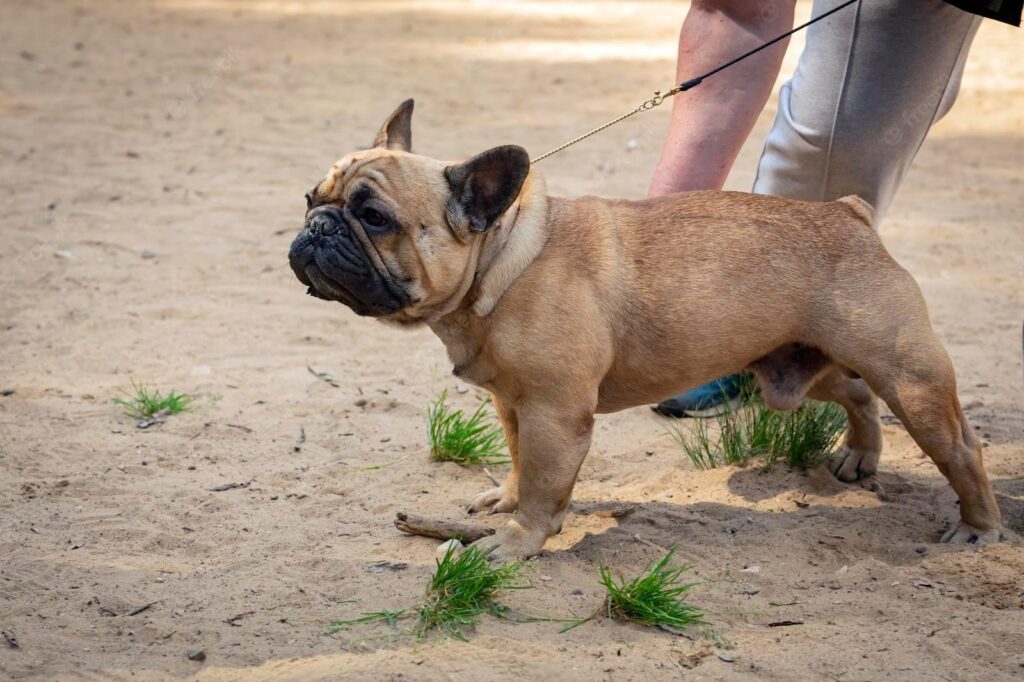
If you see your dog’s ribs, it could be a sign of an eating disorder. If the dog is underweight, it may also show signs of anorexia nervosa or bulimia nervosa. These disorders cause extreme weight loss by starving or vomiting excessively.
If the dog has a healthy weight and is showing ribs, you may need to increase its calorie intake. Try adding fatty foods like peanut butter or coconut oil to their diet. If the dog is overweight, try increasing their exercise and decreasing the amount of food they eat.
If the dog has a healthy weight and is showing ribs, you may need to increase its calorie intake. Try adding fatty foods like peanut butter or coconut oil to their diet.
If you suspect your dog has been sick recently and is losing weight rapidly, contact your veterinarian immediately for advice on how to help them regain their health and strength.
This will help them return to their average activity level without further complications developing into full-blown disease states such as cancer or diabetes mellitus (type 2).
FAQs:
Q: How many ribs are you supposed to see on a dog?
A: There are 13 ribs in a dog’s ribcage, and the last pair is often challenging to see. It may be hidden behind the sternum or floating ribs. The first pair is closest to the spine and are known as the floating ribs because they are not firmly attached to other bones. The following two ribs attach directly to the spine, followed by three sets connecting via cartilage.
Q: Why does my dog look bony?
A: Dogs are naturally thin and muscular. If your dog looks bony, he may be too thin. You can check by feeling his ribs and spine; if they are easily felt beneath the skin, he may need more calories in his diet.
Q: Why does my dog look skinny even though he eats?
A: Your dog may look skinny despite eating enough food. There could be many reasons, such as parasites, stress, or illness. If your dog does not have worms or fleas and is still losing weight, it’s essential to check with your veterinarian so that they can identify the cause of your dog’s weight loss.
Q: How can I fatten up my dog?
A: If your dog is thin, try giving them more treats or adding an extra meal to their diet. If your dog’s ribs are visible when they lie down on their side or curl up in a ball sleeping, it is time to talk to your veterinarian about getting some help with weight loss.
